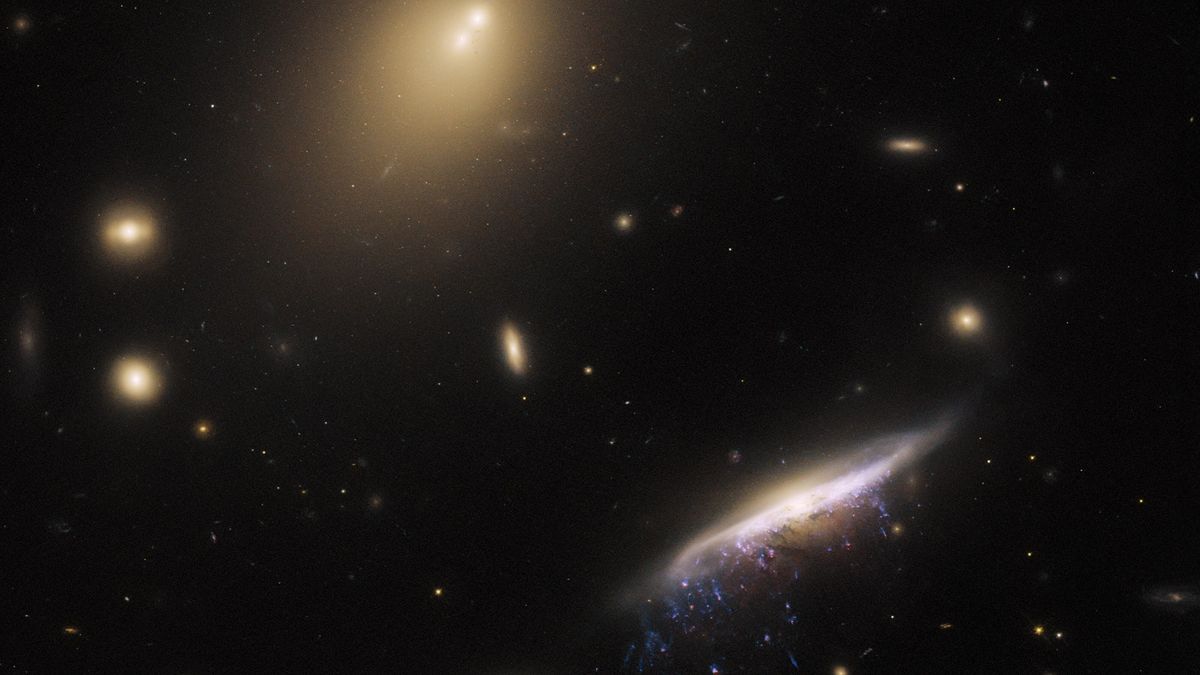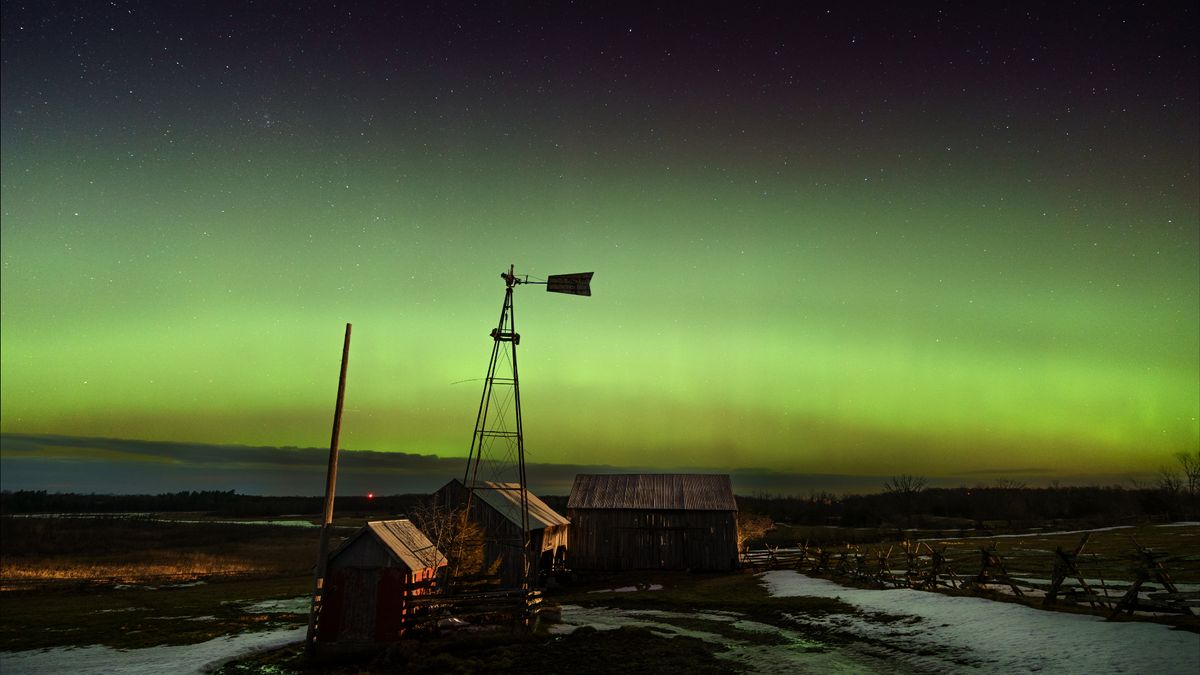A distant spiral galaxy boasts shiny streams of star-forming fuel dripping from its central disk like tentacles of a jellyfish in a brand new Hubble House Telescope picture.
Situated over 800 million light-years from Earth within the constellation Pegasus, JW100 is an instance of a “jellyfish galaxy” — a kind of galaxy that reveals lengthy tendrils illuminated by clumps of star formation, which seem like streaming away from the galaxy’s fundamental physique, giving it a jellyfish-like look.
These tendrils kind via a course of referred to as ram stress stripping, which happens when galaxies encounter the diffuse fuel that pervades galaxy clusters, in line with a statement (opens in new tab) from the European House Company (ESA), which launched the picture on Monday (March 20).
Associated: The best Hubble Space Telescope images of all time!
“As galaxies plough via this tenuous fuel, it acts like a headwind, stripping fuel and dirt from the galaxy and creating the trailing streamers that prominently adorn JW100,” ESA officers wrote within the assertion.
The Hubble Space Telescope captured JW100 edge-on, exhibiting the galaxy’s central bulge composed of stars, fuel, and dirt, and its shiny spiral arms. Patchy blue trails may be seen extending beneath the galaxy, resembling tentacles of a jellyfish.
JW100 is situated within the decrease proper of the Hubble picture, surrounded by six small elliptical galaxies and a a lot bigger elliptical galaxy, referred to as IC 5338, which is the intense space of diffuse gentle close to the highest of the picture. These galaxies all belong to the identical cluster. IC 5338, the brightest galaxy within the galaxy cluster, is assessed as a cD galaxy and has two cores.
“It is commonplace for cD galaxies to exhibit a number of nuclei, as they’re thought to develop by consuming smaller galaxies, the nuclei of which might take a very long time to be absorbed,” ESA officers mentioned. “The brilliant factors of sunshine studding its outer fringes are a wealthy inhabitants of globular clusters.”
The Hubble picture was taken utilizing the house telescope’s Broad Discipline Digital camera 3 as a part of an initiative to check star formation within the tendrils of jellyfish galaxies.
“These tendrils signify star formation below excessive circumstances, and will assist astronomers perceive the method of star formation elsewhere within the universe,” ESA officers mentioned within the assertion.
Observe Samantha Mathewson @Sam_Ashley13 (opens in new tab). Observe us @Spacedotcom (opens in new tab), or on Facebook (opens in new tab) and Instagram (opens in new tab).


